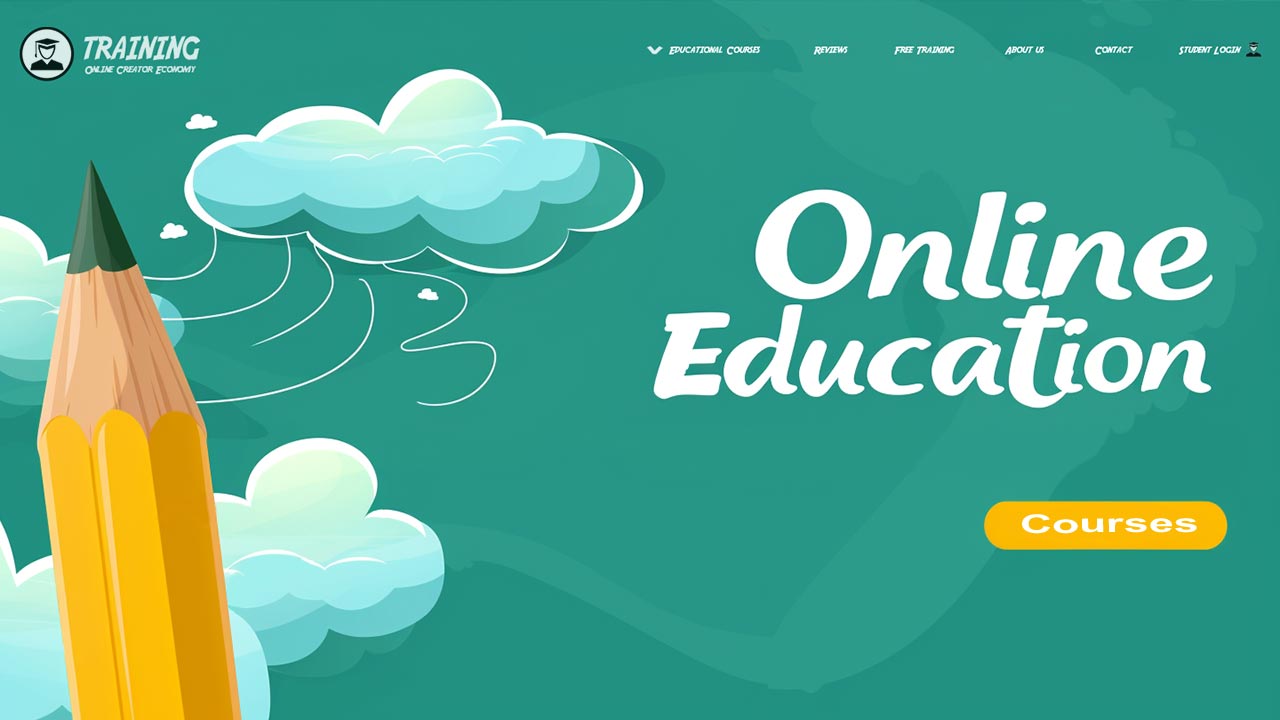How to Start a Business in the Booming Online Education Industry
The online education industry is booming, with its rapid growth accelerated by technological innovations and the increasing demand for flexible learning models. Starting a business in this space presents a promising opportunity for entrepreneurs, educators, and tech innovators alike. In today’s guide, I’ll walk you through everything you need to know about starting an online education business, current market trends, financial projections, and future growth expectations.
Table of Contents
- Introduction to Online Education Business
- Current and Future Income Data for Online Education Businesses
- Why the Online Education Market is Thriving
- Steps to Start an Online Education Business
- Top 5 Frequently Asked Questions
- Final Thoughts
- Resources
Introduction to Online Education Business
The online education industry is transforming the way we think about learning. No longer confined to physical classrooms, the rise of e-learning platforms has empowered educators to reach global audiences and allowed students to engage with content at their own pace. In 2020, the global online education market was valued at over $165 billion, with projections that it could exceed $950 billion by 2030. With such substantial growth potential, entering this space presents both a challenge and an immense opportunity for those ready to capitalize on the ever-evolving demands of digital learners.
Current and Future Income Data for Online Education Businesses
The online education industry has seen steady financial growth, with projections indicating continued expansion over the next decade.
Below is a visual representation of the growth from 2000 to 2023, reflecting the market size in billions of USD:
Growth of Online Education Businesses (2000 - 2023)
The next chart highlights the increase from $165 billion in 2020 to a projected $950 billion by 2030. The significant growth is fueled by increased demand for online education, technological advancements, and the rise of new learning platforms:Predicted Growth of Online Education Businesses (2020 - 2030)
Why the Online Education Market is Thriving
There are several reasons why the online education market is experiencing exponential growth:
- Accessibility: Internet access has become ubiquitous, creating a more inclusive global learning environment.
- Affordability: Online courses are typically more cost-effective compared to traditional education.
- Technological Advancements: Innovations such as AI-powered learning, virtual reality, and gamification have improved the user experience and retention rates.
- Pandemic-Driven Growth: COVID-19 has accelerated the adoption of online education, forcing traditional education providers to rethink their delivery models.
Key Market Statistics:
- Projected Growth: By 2026, the market size of online education is expected to surpass $400 billion, with a CAGR (Compound Annual Growth Rate) of over 16% between 2021 and 2026.
- Increasing User Base: E-learning platforms like Coursera, Udemy, and Teachable have seen exponential growth in users, reaching millions of students globally.
Steps to Start an Online Education Business
Starting an online education business requires careful planning, execution, and ongoing management. Below is an in-depth guide that expands on the core steps involved in building a successful e-learning venture.
1. Identify a Niche
Finding Your Unique Place in the Market
The first step in starting an online education business is identifying your niche. The niche you choose will determine your audience, the type of content you create, and your competitive positioning in the market.
Key considerations for finding your niche include:
- Your expertise: What topics or fields are you knowledgeable about? Leveraging your existing knowledge gives you an advantage.
- Market demand: Are there gaps in the current market that need filling? Use tools like Google Trends, keyword research, and competitor analysis to validate your ideas.
- Audience needs: What problems are potential learners looking to solve? Focus on providing value through your content by addressing these needs.
Examples of popular niches:
- Technology (e.g., AI, coding, cybersecurity)
- Business and entrepreneurship
- Creative skills (e.g., graphic design, music production)
- Health and wellness (e.g., mental health, fitness)
- Personal development (e.g., leadership, productivity, mindfulness)
2. Develop a Business Plan
Creating a Roadmap for Success
Once you have identified your niche, the next step is to develop a solid business plan. This plan will serve as your blueprint, detailing your goals, target audience, operational structure, and revenue models.
Components of a business plan:
- Mission statement: Define the purpose and vision of your online education business.
- Target market: Detail the demographic, psychographic, and behavioral characteristics of your audience.
- Competitive analysis: Research and evaluate your competitors to identify what makes your offerings stand out.
- Revenue models: Outline how you plan to monetize your courses (more on this later).
- Course development strategy: Detail how you will create, package, and present your educational content.
- Marketing strategy: Include plans for how you will promote your business and attract students.
- Financial projections: Make informed estimates on startup costs, operating expenses, and potential income.
3. Choose a Delivery Platform
Selecting the Right Tools to Deliver Your Courses
The platform you choose will play a significant role in your business’s success. There are two primary options for delivering online courses: third-party platforms and self-hosted solutions.
Option 1: Third-party Platforms These are turnkey solutions that simplify course creation, hosting, and delivery. Some popular options include:
- Teachable: Known for its user-friendly interface and extensive marketing tools.
- Thinkific: Offers a high degree of customization and a robust course builder.
- Kajabi: An all-in-one platform that combines course creation, website building, and marketing automation.
Pros: Ease of use, integrated payment processing, marketing tools, and student management. Cons: Limited control over branding and often higher transaction fees.
Option 2: Self-hosted Solutions If you prefer more control over the look and functionality of your online courses, you may want to create your own course website using a content management system (CMS) like WordPress, along with a plugin like LearnDash.
Pros: Full control over your brand, customizable features, and potential savings on platform fees. Cons: Requires more technical knowledge and initial setup.
Regardless of the platform you choose, ensure it offers essential features such as:
- User-friendly interface
- Mobile compatibility
- Integrated payment processing
- Support for multimedia content (videos, quizzes, downloadable files)
- Student analytics and progress tracking
4. Create Content and Courses
Designing High-Quality Educational Content
Creating your course content is one of the most crucial steps in starting an online education business. Your content needs to be engaging, informative, and well-organized to retain students and encourage word-of-mouth marketing.
Steps to create content:
- Course Outline: Start by drafting an outline that breaks your subject into modules, lessons, or sections. This structure helps learners follow a clear learning path.
- Multimedia Elements: Use a mix of video, audio, written content, and quizzes to cater to different learning styles.
- Videos: Video-based content is highly engaging. Use professional-quality audio and visuals to maintain credibility.
- Interactive Elements: Include quizzes, assignments, and group discussions to enhance retention.
- Subject Matter Expertise: Ensure that your content is factually accurate and well-researched. If you’re not an expert on certain aspects of the subject, consider collaborating with guest instructors or industry professionals.
- Content Production Tools:
- For video: Use tools like Camtasia or Adobe Premiere for editing.
- For presentations: Leverage PowerPoint or Google Slides to create visual aids.
- For quizzes: Use LMS-integrated tools like Thinkific’s quiz builder.
Finally, offer downloadable resources such as eBooks, PDFs, or templates to add extra value to your courses.
5. Market Your Courses
Building a Strong Marketing Strategy
Without a proper marketing plan, even the most well-made courses can fail to attract students. There are several strategies you can adopt to increase visibility and generate enrollment.
Key marketing strategies:
- SEO (Search Engine Optimization): Use keyword research to optimize your website or course landing pages. Focus on long-tail keywords specific to your niche (e.g., “AI for business course” or “online fitness coaching program”).
- Content Marketing: Use blogging, YouTube videos, or podcast episodes to build your authority in the space and drive organic traffic to your course offerings.
- Social Media Marketing: Promote your courses across relevant social media platforms. LinkedIn, YouTube, and Instagram are particularly effective for educational content.
- Email Marketing: Build an email list of prospective students and send regular newsletters, free resources, and promotional offers to nurture leads.
- Paid Advertising: Use Google Ads, Facebook Ads, or LinkedIn Ads to target your ideal audience. Be sure to refine your targeting settings and ad copy to ensure a high conversion rate.
Pro Tip: Consider launching a freemium model, where potential students can access a free trial or a basic course before purchasing premium content. This builds trust and can lead to higher conversion rates.
6. Monetize Your Business
Maximizing Revenue from Your Courses
Monetization is an essential step for turning your passion into a profitable business. There are several revenue models to consider:
- Subscription Model: Charge a recurring fee for students to access a library of courses or ongoing lessons. This works well if you can offer updated or exclusive content regularly.
- One-Time Payment: Charge a flat fee for individual courses or course bundles. Pricing can vary depending on the course depth, duration, and target market.
- Course Licensing: License your course content to other institutions, organizations, or businesses in exchange for a licensing fee or royalty.
- Affiliate Marketing: Promote third-party products or services within your course or to your email list, earning commissions on each sale.
- Corporate Training: Offer specialized courses for businesses, organizations, or government institutions looking for tailored training solutions.
Ultimately, your pricing and monetization model should align with your target audience’s willingness to pay and the value your course offers.
Top 5 Frequently Asked Questions
Final Thoughts
Starting an online education business offers incredible opportunities for growth and financial independence. The most important takeaway is that success in this industry relies on your ability to create value through high-quality content and targeted marketing strategies. As the demand for online education continues to grow, those who can identify their niche, deliver exceptional content, and continually innovate will reap the benefits of this dynamic market.










Leave A Comment